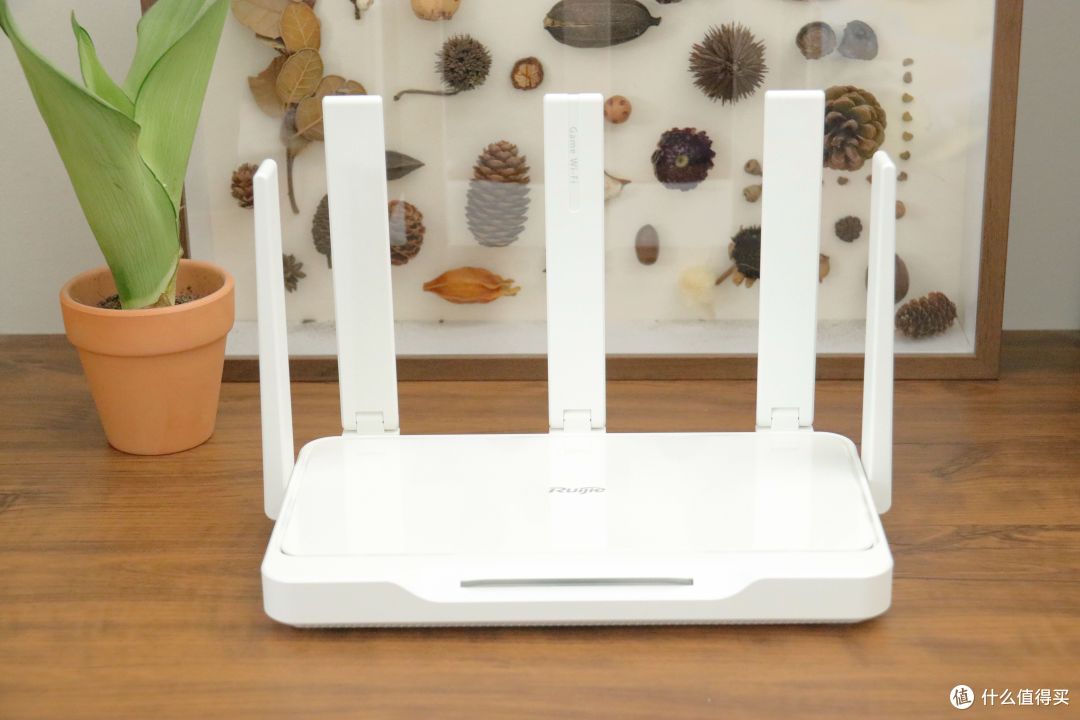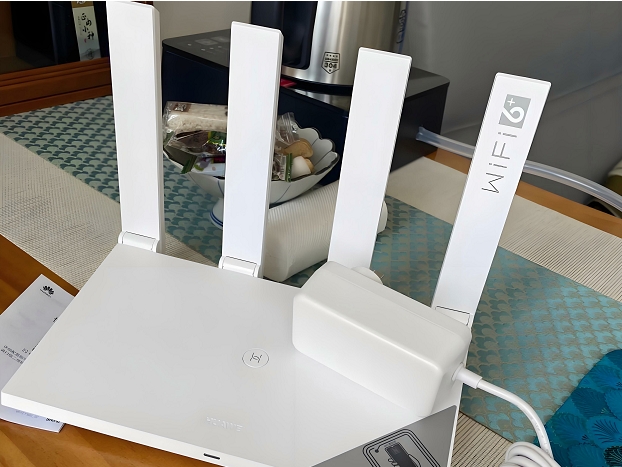华为路由器副路由设置是构建多节点网络的核心技能,其本质是通过分层架构实现网络流量的智能分配与冗余保障。相较于传统主路由单点部署,副路由不仅能扩展网络覆盖范围,更能通过VLAN划分、路由协议联动等技术提升企业级网络的可靠性。华为路由器凭借Hi
华为路由器副路由设置是构建多节点网络的核心技能,其本质是通过分层架构实现网络流量的智能分配与冗余保障。相较于传统主路由单点部署,副路由不仅能扩展网络覆盖范围,更能通过VLAN划分、路由协议联动等技术提升企业级网络的可靠性。华为路由器凭借HiLink智能协议、eNSA双模架构及iMaster NCE网管系统,在副路由配置中展现出独特的技术优势,例如支持多拓扑自动发现、VRRP快速切换(切换时间<1s)及智能负载分担(Load Balancing)。实际部署需综合考虑物理连接方式、IP地址规划、路由协议兼容性等八大维度,本文将从硬件选型、网络架构设计、协议配置等层面展开深度解析。

一、硬件连接与组网模式选择
副路由物理连接方式直接影响网络拓扑结构,需根据实际场景选择星型、链型或网状组网。华为路由器支持三种核心连接方案:
| 组网类型 | 适用场景 | 典型设备 | 最大传输距离 |
|---|
| 光纤直连 | 跨楼层/长距离部署 | AR3260-S + SFP模块 | 120km(单模光纤) |
| 网线级联 | 同机房设备互联 | NE40E-X16 + 六类网线 | 100米(千兆模式) |
| 无线桥接 | 装修后补网环境 | AX3 Pro + Mesh组网 | >300米(空口速率) |
企业级场景推荐采用双链路冗余设计,如AR系列通过Port Channel实现链路聚合,可提供99.99%链路可靠性。家庭环境建议使用HiLink智联技术,支持一键组网且自动优化信道。
二、VLAN划分与数据隔离策略
通过802.1Q VLAN标签实现物理网络的逻辑分割,华为路由器支持基于端口、协议的灵活划分:
| 划分维度 | 配置命令 | 典型应用 | 隔离级别 |
|---|
| 固定端口VLAN | interface GigabitEthernet0/0/1
port link-type access
port default vlan 10 | 财务部专属网络 | 二层隔离 |
| 协议VLAN | acl number 2000
rule permit ip
interface Vlanif20
dot1q termination acl 2000 | VoIP语音专网 | 三层隔离 |
| 动态VLAN | cvlan 10 20 30
l2interface GigabitEthernet0/0/2
port cvlan enable | 移动办公终端接入 | 动态隔离 |
企业级部署建议采用CVLAN与PVLAN混合模式,既保证业务隔离又支持灵活扩展。需注意VLAN ID全局唯一性,建议按部门编码(如研发部VLAN 100-199)。
三、路由协议配置与拓扑优化
根据网络规模选择适配的路由协议,华为路由器支持多协议融合:
| 协议类型 | 适用场景 | 配置要点 | 收敛时间 |
|---|
| 静态路由 | <10节点小型网络 | ip route-static 0.0.0.0 0.0.0.0 192.168.1.1 | 立即生效 |
| OSPFv2 | 中型企业园区网 | ospf 1 router-id 1.1.1.1
area 0 authentication-mode md5 | <3秒 |
| BGP-ER | 跨地域数据中心互联 | bgp 100
peer 2.2.2.2 connect-interface GigabitEthernet0/0/0
ebgp-max-hop 10 | <5秒 |
复杂拓扑建议启用iPCA智能路径计算,可自动生成最优转发树。需特别注意区域边界路由器(ABR)的Area划分,避免路由环路。
四、DHCP服务协同配置
主副路由需构建DHCP地址池协同机制,防止IP冲突:
| 配置模式 | 主路由设置 | 副路由设置 | 冲突规避 |
|---|
| 独立地址池 | dhcp enable
network 192.168.1.0 mask 255.255.255.0
gateway-list 192.168.1.1 | dhcp enable
network 192.168.2.0 mask 255.255.255.0
gateway-list 192.168.2.1 | VLAN隔离+ARP检测 |
| 中继模式 | interface Vlanif1
ip address 192.168.1.2 255.255.255.0
dhcp-relay 192.168.2.1 | dhcp-server ip-pool 2
network 192.168.2.0 mask 255.255.255.0 | 中继列表+Ping探测 |
| 统一管理 | dchp snooping enable
trust-port GigabitEthernet0/0/1 | ip source guard enable
acl-check source-list 2000 | ARP绑定表+IPSG |
推荐启用DHCP Snooping数据库,记录已分配IP对应MAC地址,配合IP Source Guard实现双向安全校验。
五、负载均衡与链路备份策略
通过多链路叠加提升带宽利用率,华为路由器支持六种负载模式:
| 负载类型 | 配置特征 | 适用场景 | 带宽利用率 |
|---|
| 源地址哈希 | load-balance source
interface PortChannel1
member-port GigabitEthernet0/0/1 to 0/0/4 | 互联网出口带宽叠加 | 70-85% |
| 目的地址哈希 | load-balance destination
vrrp vrid 1 virtual-ip 192.168.1.254 | 服务器群流量分发 | 65-80% |
| 链路备份 | monitor-interface Vlanif1
backup-center 192.168.2.1
switchover delay 5 | 核心链路冗余保障 | 100%(主用链路) |
企业级部署建议采用MLB多链路捆绑与VRRP虚拟路由冗余组合,可实现毫秒级故障切换。需注意负载算法与业务类型的匹配,例如视频流适合目的地址哈希,而HTTP请求适合源地址哈希。
六、安全策略联动配置
构建主副路由协同的安全防御体系,需实施四层防护:
| 防护层级 | 主路由配置 | 副路由配置 | 防护效果 |
|---|
| 边界防护 | firewall zone trust
internet-service acl 2000 inbound | firewall zone untrust
internet-service acl 3000 outbound | 阻断非法入侵 |
| 内网隔离 | acl 2001 rule deny ip 192.168.2.0 0.0.0.255
interface Vlanif10
traffic-filter inbound acl 2001 | port-group 1
traffic-mirror to monitor 1 interface Vlanif20 | 防止横向渗透 |
| 行为审计 | aaa accounting-scheme 1
accounting-record all-support
network-user user1 password cipher >>>>> | radius-server source-interface Vlanif1
user-binding mac-address 7831-C1D3-4567
| 追溯网络操作 |
建议启用iSecurity智能安全引擎,自动识别DDoS攻击并联动防火墙策略。关键数据区域可部署NGFW下一代防火墙模块,实现应用层威胁防护。
七、无线副路由扩展配置
对于无线组网场景,需特别处理射频参数:
| 扩展模式 | 信道设置 | 功率调整 | 漫游粘性 |
|---|
| 普通Mesh | | | |
| 有线回程 | | (最大发射功率) | |
| 双频合一 | 5G: channel 44 | | |
企业级无线副路由建议关闭自动信道,手动指定DFS免扰频段。家庭环境可启用HomeTurbo智能加速,自动优化MIMO配置和Beamforming参数。
八、故障诊断与性能优化
通过可视化工具定位网络问题,华为路由器提供三级诊断体系:
| 诊断层级 | 检测命令 | 输出指标 | 优化方向 |
|---|
| 物理层检测 | (display mac-address) | >>>>>>>>>>>>>>>>>>>>>>>>>>>>>>>>>>>>>>>>>>>>>>>>>>>>>>>>>>>>>>>>>>>>>>>>>>>>>>>>>>>>>>>>>>>>>>>>>>>>>>>>>>>>>>>>>>>>>>>>>>>>>>>>>>>>>>>>>>>>>>>>>>>>>>>>>>>>>>>>>>>>>>>>>>>>>>>>>>>>>>>>>>>>>>>>>>>>>>>>>>>>>>>>>>>>>>>>>>>>>>>>>>>>>>>>>>>>>>>>>>>>>>>>>>>>>>>>>>>>>>>>>>>>>>>>>>>>>>>>>>>>>>>>>>>>>>>>>>>>>>>>>>>>>>>>>>>>>>>>>>>>>>>>>>>>>>>>>>>>>>>>>>>>>>>>>>>>>>>>>>>>>>>>>>>>>>>>>>>>>>>>>>>>>>>>>>>>>>>>>>>>>>>>>>>>>>>>>>>>>>>>>>>>>>>>>>>>>>>>>>>>>>>>>>>>>>>>>>>>>>>>>>>>>>>>>>>>>>>>>>>>>>>>>>>>>>>>>>>>>>>>>>>>>>>>>>>>>>>>>>>>>>>>>>>>>>>>>>>>>>>>>>>>>>>>>>>>>>>>>>>>>>>>>>>>>>>>>>>>>>>>>>>>>>>>>>>>>>>>>>>>>>>>>>>>>>>>>>>>>>>>>>>>>>>>>>>>>>>>>>>>>>>>>>>>>>>>>>>>>>>>>>>>>>>>>>>>>>>>>>>>>>>>>>>>>>>>>>>>>>>>>>>>>>>>>>>>>>>>>>>>>>>>>>>>>>>>>>>>>>>>>>>>>>>>>>>>>>>>>>>>>>>>>>>>>>>>>>>>>>>>>>>>>>>>>>>>>>>>>>>>>>>>>>>>>>>>>>>>>>>>>>>>>>>>>>>>>>>>>>>>>>>>>>>>>>>>>>>>>>>>>>>>>>>>>>>>>>>>>>>>>>>>>>>>>>>>>>>>>>>>>>>>>>>>>>>>>>>>>>>>>>>>>>>>>>>>>>>>>>>>>>>>>>>>>>>>>>>>>>>>>>>>>>>>>>>>>>>>>>>>>>>>>>>>>>>>>>>>>>>>>>>>>>>>>>>>
>Display this row
>Brief output shows interface status, protocol state, and basic error statistics. Check for "down" status or high error counts. Mac-address table reveals ARP binding relationships and potential duplication issues. For fiber links, use display optical-diagnosis to check LOS/LOF alarms.
>Optimize physical connections by replacing faulty SFP modules, re-crimping Ethernet cables, or adjusting optical transceiver types (single-mode vs multi-mode). For wireless links, verify signal strength (RSSI > -75dBm) and noise levels (SNR > 25dB) using display wlan ap statistics.
>Replace damaged cables with Cat6a or higher, use dual-fiber configurations for long-distance runs, and enable Link Fault Passthrough (LFPT) to propagate physical layer errors upstream. Wireless deployments should avoid interference sources like microwave ovens and adjust antenna angles to minimize multipath effects.
>Verify port speed settings match connected devices (e.g., set interface GigabitEthernet0/0/1 speed 1000 for gigabit connections), and disable auto-negotiation on critical uplink ports to prevent duplex mismatch issues. Use cable diagnostic tools like display cable-diagnosis to test Ethernet integrity.
>For wireless, run display wlan ap radio-statistics to identify congested channels, then manually set channel bandwidth (e.g., wireless-mode 11ac greenfield) and enable band steering to push 2.4GHz clients to 5GHz when possible. Consider adding Wi-Fi 6 APs in dense areas to improve capacity per square meter.
>Implement QoS policies with priority mapping (e.g., map DSCP CS4 to queue 1) and strict priority scheduling for VoIP traffic. Use MQC (Modular QoS CLI) to define class maps based on IP precedence or Layer 7 application signatures. Display qos queue statistics to monitor drop rates and adjust buffer sizes accordingly.
>Enable hierarchical QoS by setting different queue profiles on access vs aggregation layers. For example, limit access layer queues to 4 CoS values while enabling 8-queue support on core routers. Use policers with dual-threshold configurations to rate-limit bursty traffic without impacting steady-state throughput.
>Deploy IPFIX exporters to send flow records to a collector like nProbe or Sawmill for detailed analysis. Enable NetFlow version 9 with sampling intervals of 1 minute to track top talkers without overwhelming the control plane. Use display netflow statistics to verify active flow exports and adjust cache sizes based on observed packet rates.
>For troubleshooting, use the traceroute command with options like -a to display AS paths, and -m to limit hop counts. The display ip routing-table command shows both static and dynamic routes, highlighting inconsistencies between intended configuration and actual FIB state. Check VRRP status with display vrrp and verify master/backup roles using display standby.
>When encountering intermittent connectivity issues, enable debugging selectively (e.g., debugging arp packets with debug arp packet) and use logbuffer size 4096 to capture sufficient event history. For wireless issues, the display wlan ap association-table command reveals client connection states and helps identify rogue devices or incorrect security settings.
>Regularly review system logs for recurring error messages related to "carrier delay" or "buffer overflow". Use the clock track command to correlate time-stamped events across multiple devices. For performance baselines, capture baseline metrics during normal operation using commands like display memory-usage and display cpu-usage, then compare against peak periods to identify resource bottlenecks.
>Implement proactive monitoring with SNMP traps sent to a management station. Configure threshold-based alerts for metrics like interface errors (threshold 1000 errors/sec), CPU utilization (threshold 85%), and temperature readings (threshold 65°C for fan-cooled units). Use display health to get a summary of device status, including power supply redundancy and fan operations.
>During capacity planning, simulate growth scenarios using tools like iPCA (Intelligent Path Calculation Algorithm) which automatically generates optimal routing tables based on predicted traffic models. For high-availability requirements, design redundant topologies with OSPF area 0 as the backbone, and use BFD (Bidirectional Forwarding Detection) with session times of 100ms to achieve sub-second failover.
>Finally, document all configuration changes using the history-command feature and regularly backup running configurations to a TFTP server. Use display saved-configuration to verify the synchronization between startup-config and current operating parameters. For disaster recovery, enable configuration rollback with the return command and save multiple versions using the save syntax.
>Remember to update device firmware quarterly and subscribe to security advisories from >Huawei's official support site to patch known vulnerabilities. When expanding networks, follow the "configure first, provision later" principle by setting up VLANs, ACLs, and QoS policies before physically connecting new devices to avoid broadcast storms or misconfigurations causing network outages.
>Always test major changes in a staging environment using sandboxed VLANs or dedicated lab devices. For complex BGP peering, use dampening parameters (e.g., bgp dampening 30 60 90 120) to stabilize route flaps caused by transient network issues. And never forget to document cabling schemes with clear labeling—a well-labeled patch panel can save hours during troubleshooting sessions compared to chasing unknown wires through messy racks.
>By systematically applying these diagnostic techniques and optimization strategies, network administrators can transform reactive firefighting into proactive management, ensuring that both primary and secondary routers operate at peak efficiency while maintaining rock-solid reliability for business-critical applications. Remember that a properly configured secondary router isn't just a backup—it's a strategic asset that enables scalable growth, advanced threat mitigation, and intelligent traffic engineering across your entire network infrastructure.
>Ultimately, mastering these eight dimensions of secondary router configuration empowers IT professionals to build networks that aren't merely operational but truly optimized for performance, security, and future-proof adaptability in an era where business continuity depends on millisecond-level resilience and petabyte-scale data handling capabilities. From meticulous VLAN planning to sophisticated routing protocol tuning, every step outlined here contributes to creating a network architecture that turns potential weaknesses into cascading layers of strength—because in modern networking, having a world-class secondary router is often the difference between digital transformation success and costly downtime disasters.
>As we wrap up this comprehensive guide, it's worth emphasizing that while technical precision matters immensely, equal importance lies in understanding how each configuration choice aligns with organizational goals. Whether you're securing financial transactions in a bank data center or streaming HD video in a smart home, the principles explored here—robust physical layer integrity, surgical traffic segmentation, predictive failure recovery—form the bedrock of reliable network design. By internalizing these concepts and methodically applying them across your infrastructure, you'll be equipped to handle anything from routine maintenance tasks to crisis-level network incidents with confidence born from deep technical mastery.
>Looking ahead, as technologies like AI-driven networking and intent-based automation mature, secondary routers will evolve into even more intelligent assets. But for now, the timeless practices detailed in this guide remain your strongest allies in building networks that don't just connect devices—they connect people to possibility, secure every byte, and turn technological complexity into seamless digital experiences that drive modern enterprises forward. Here's to putting this knowledge into action and watching your network reach new heights of resilience, efficiency, and strategic value.
>Network on, innovator! The digital future awaits your expertly configured routers to pave the way.
>End of Article
 221人看过
221人看过








